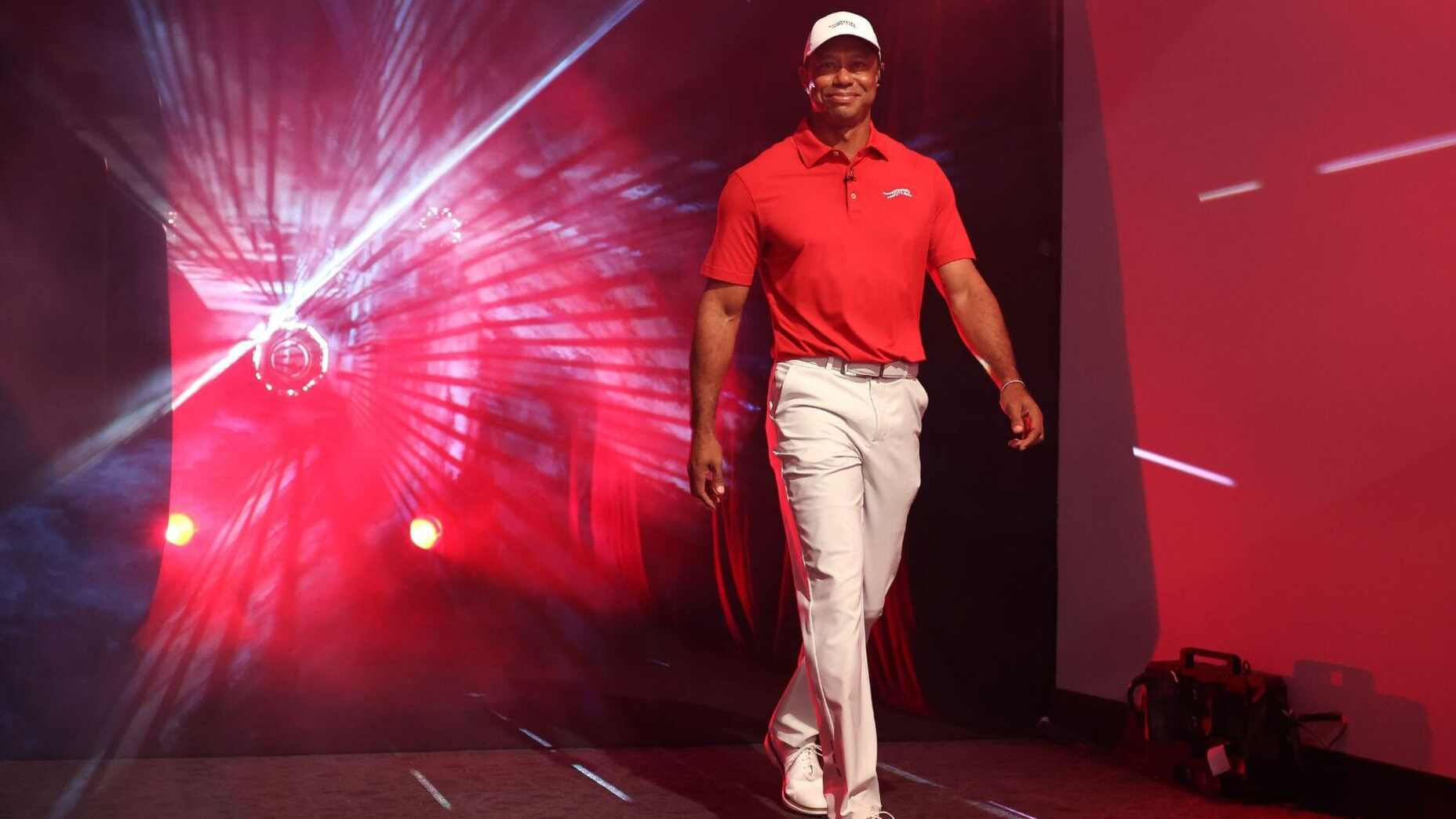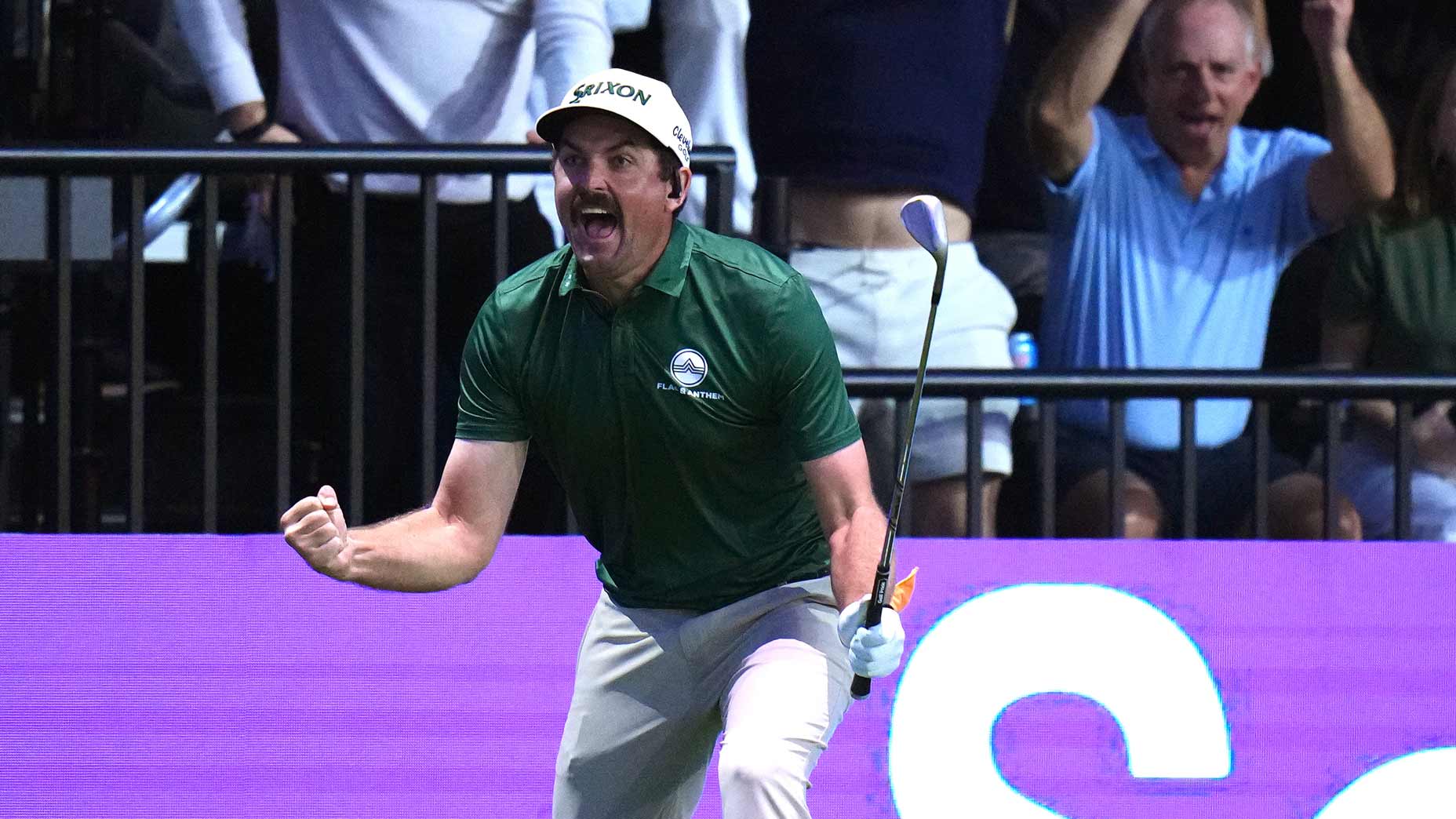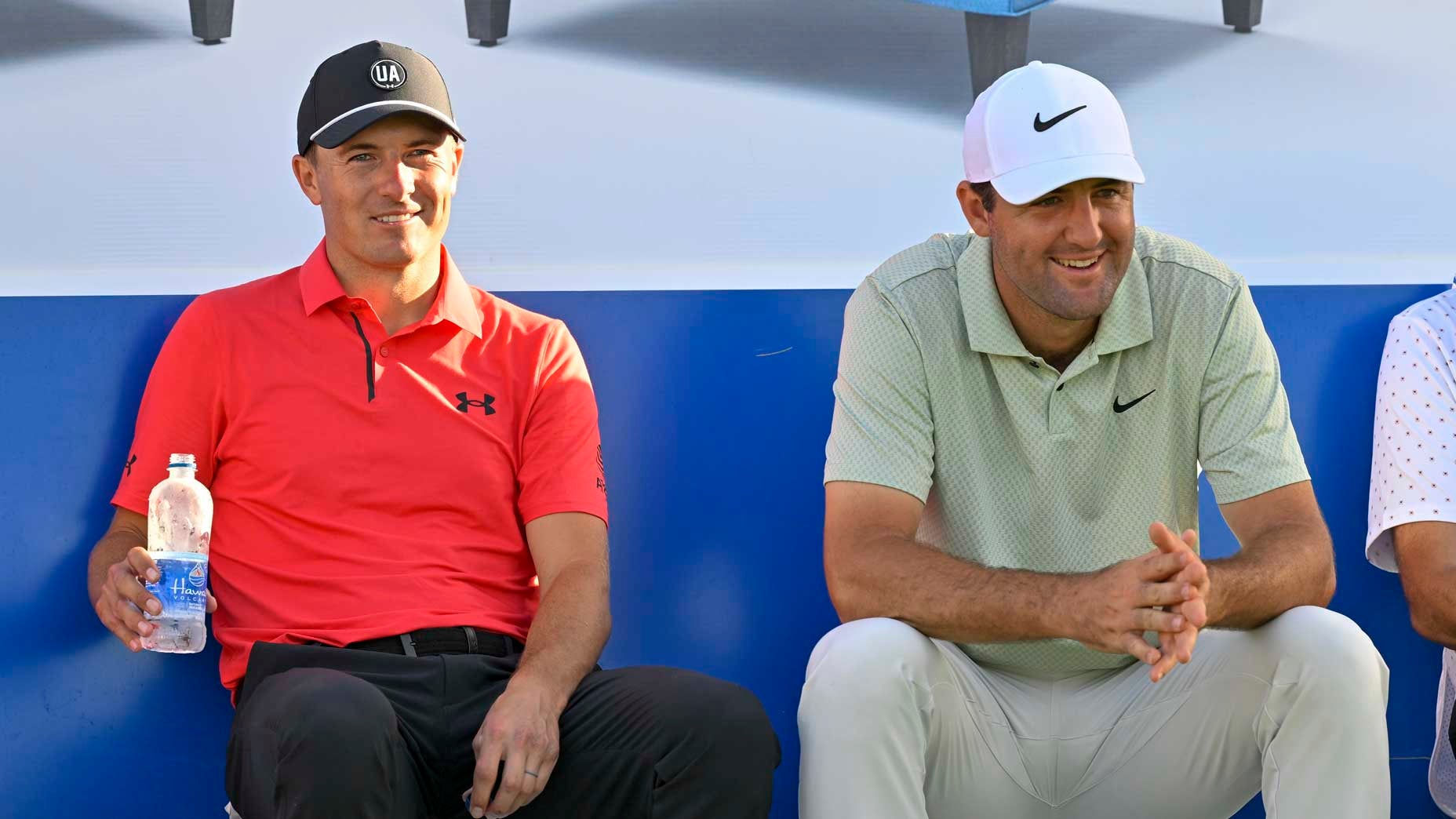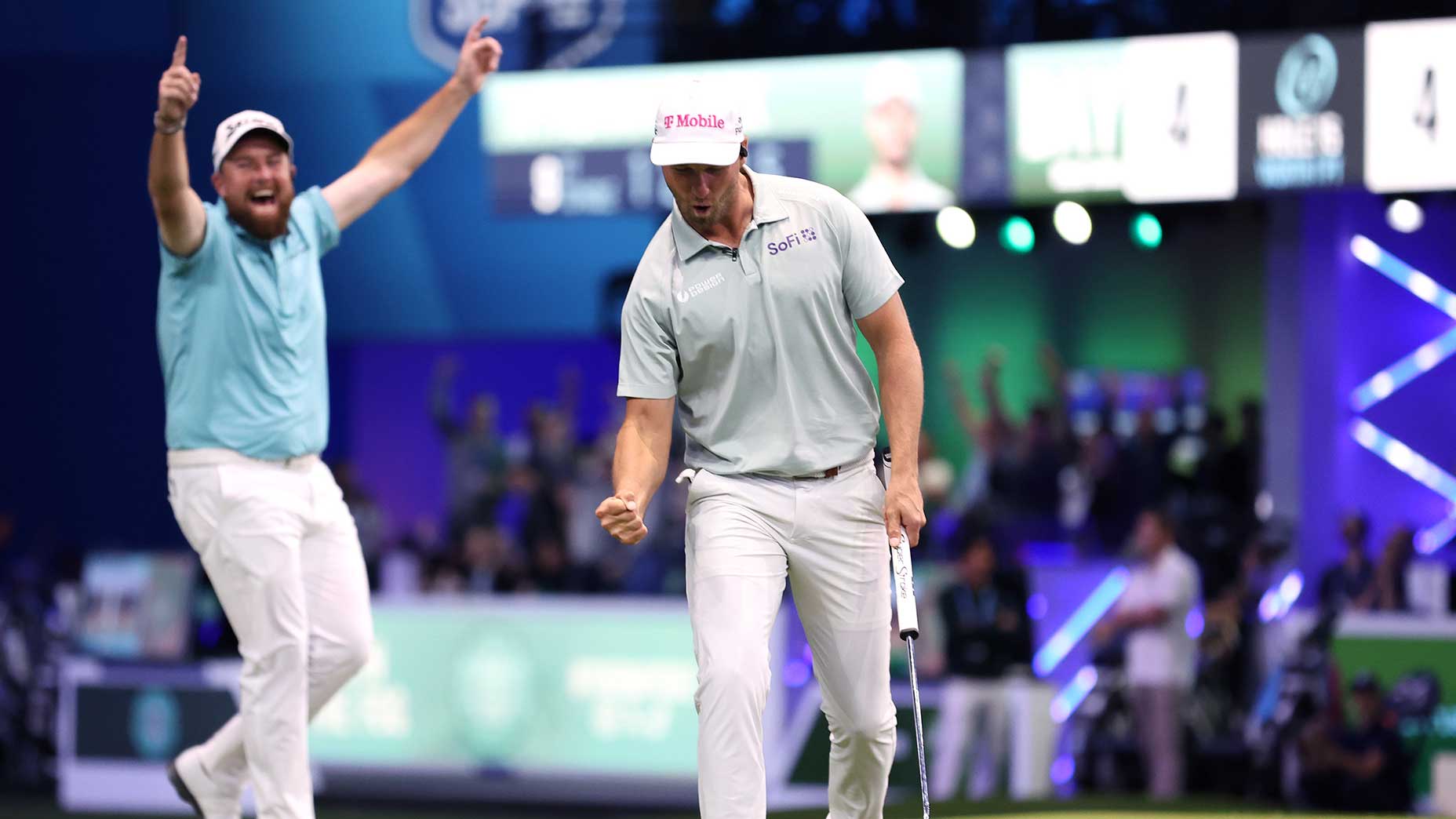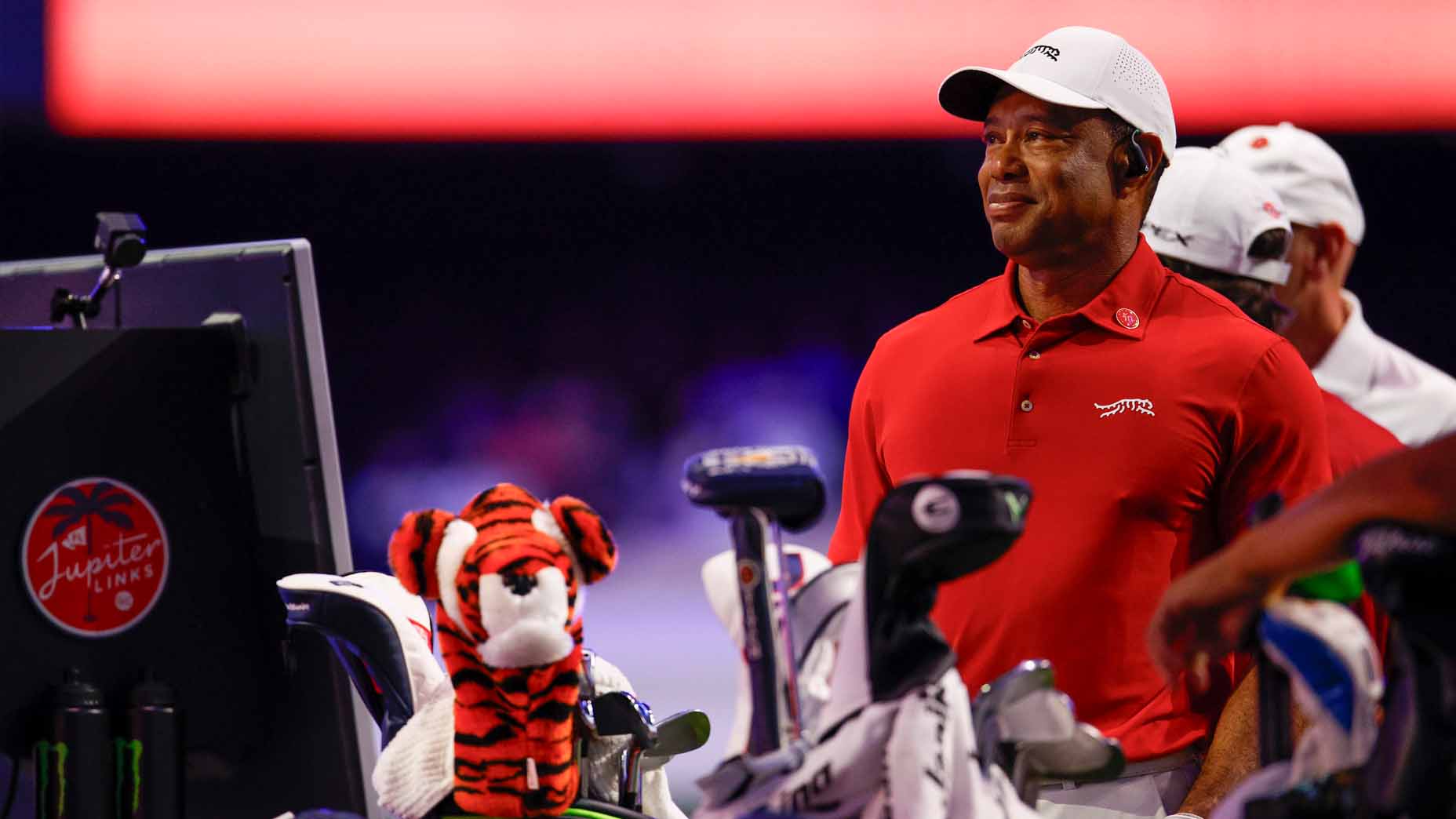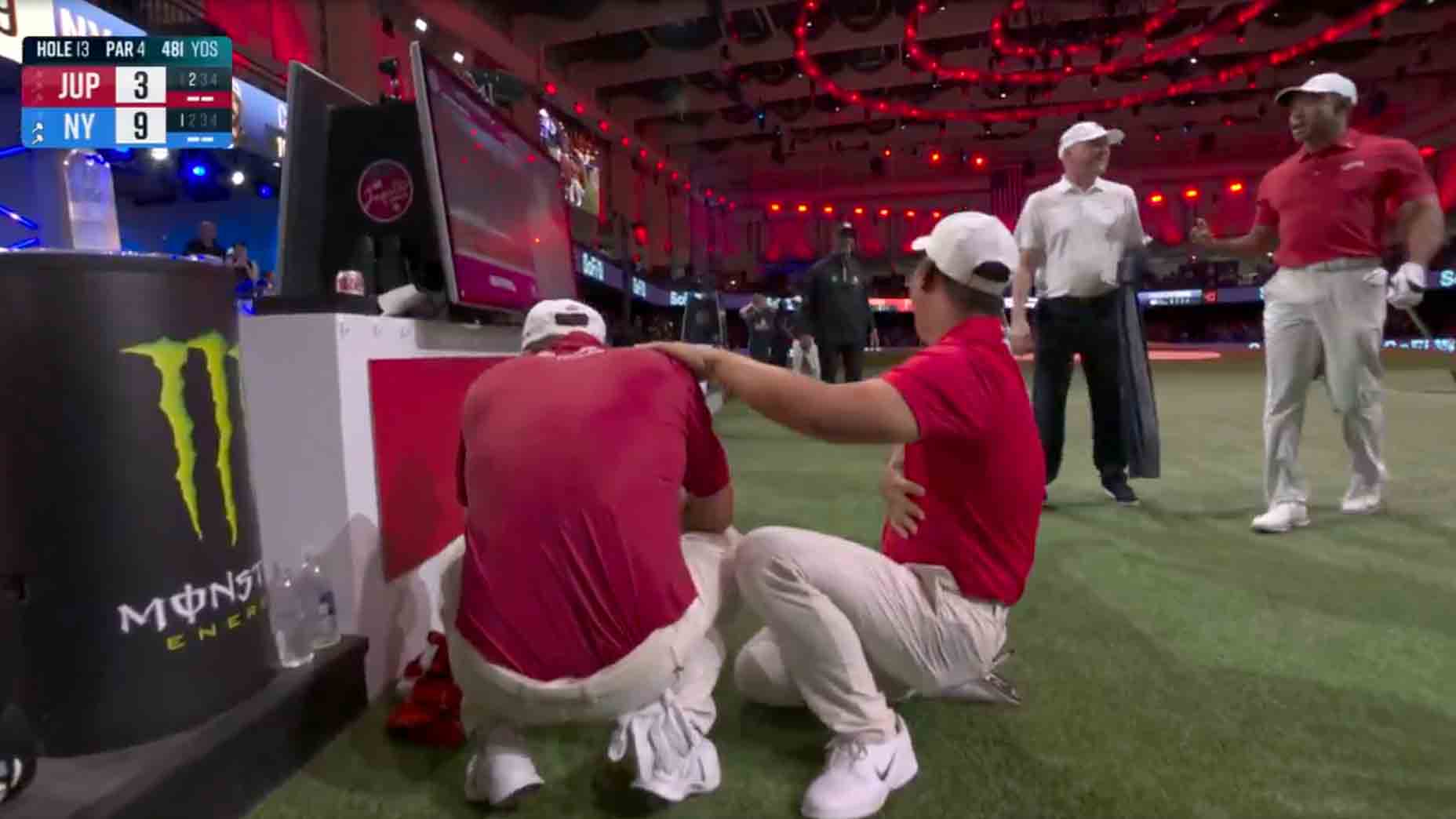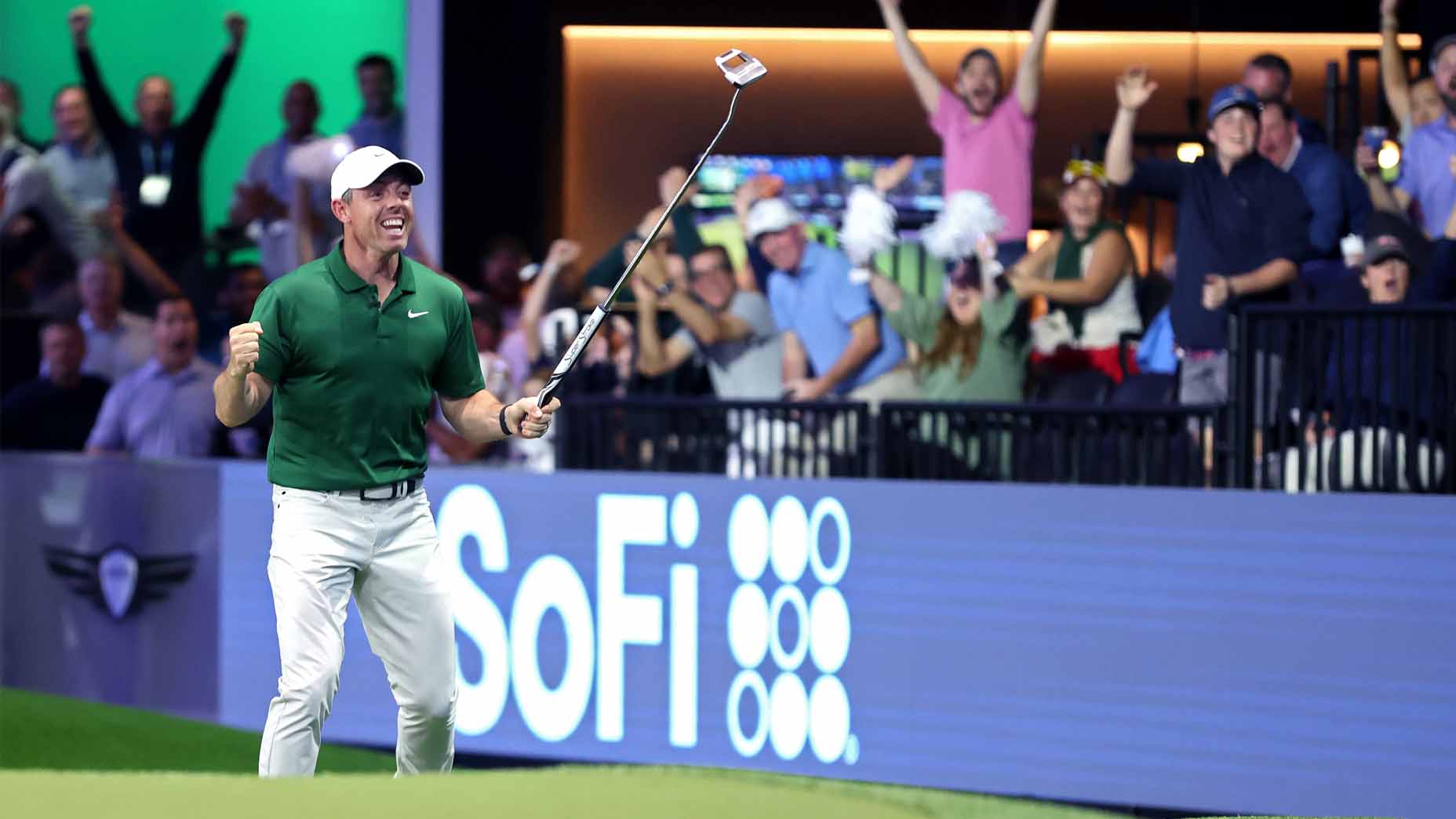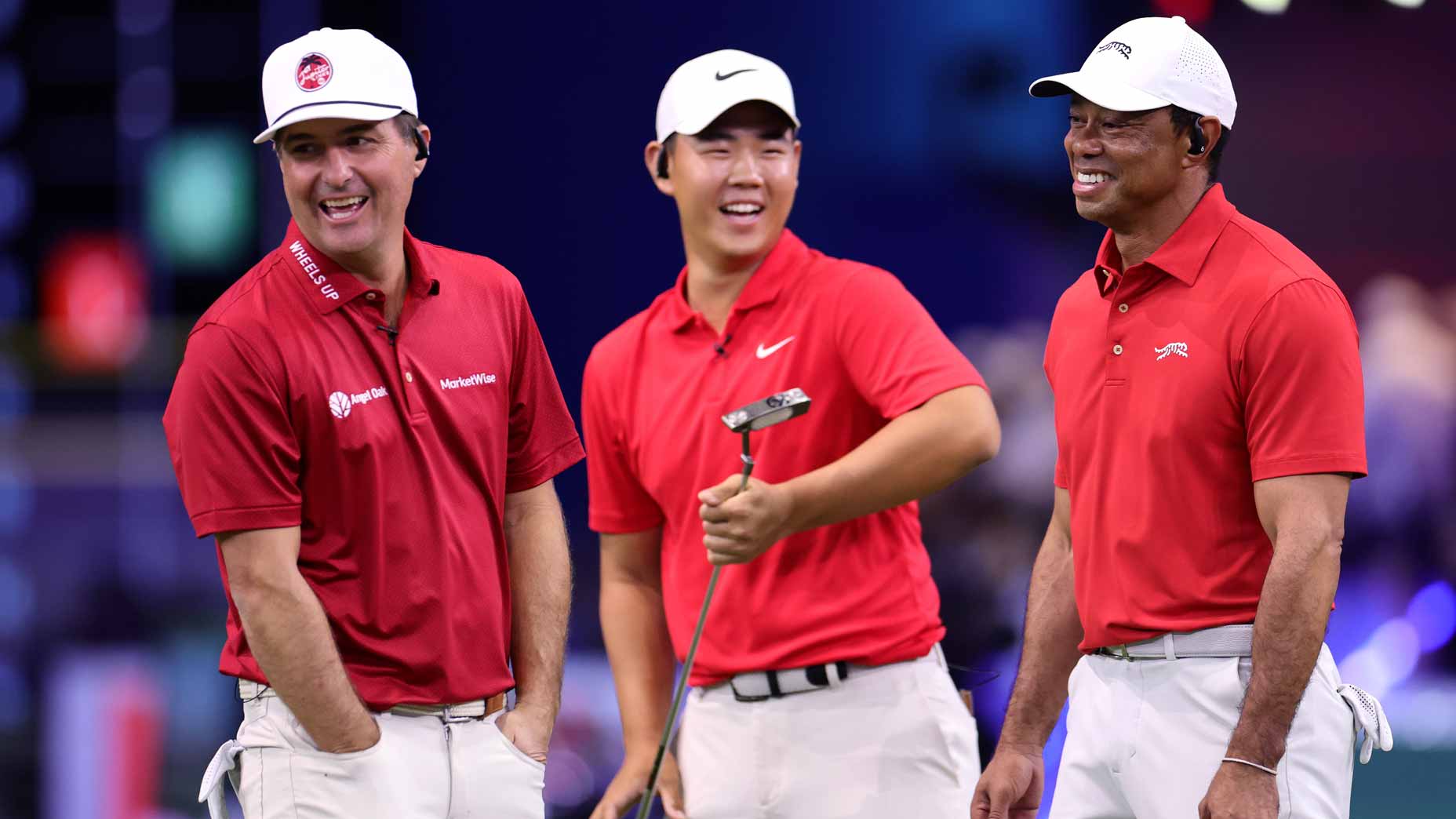‘Golf’s getting better’: Pros discuss secret key to TGL’s continued surge
- Share on Facebook
- Share on Twitter
- Share by Email
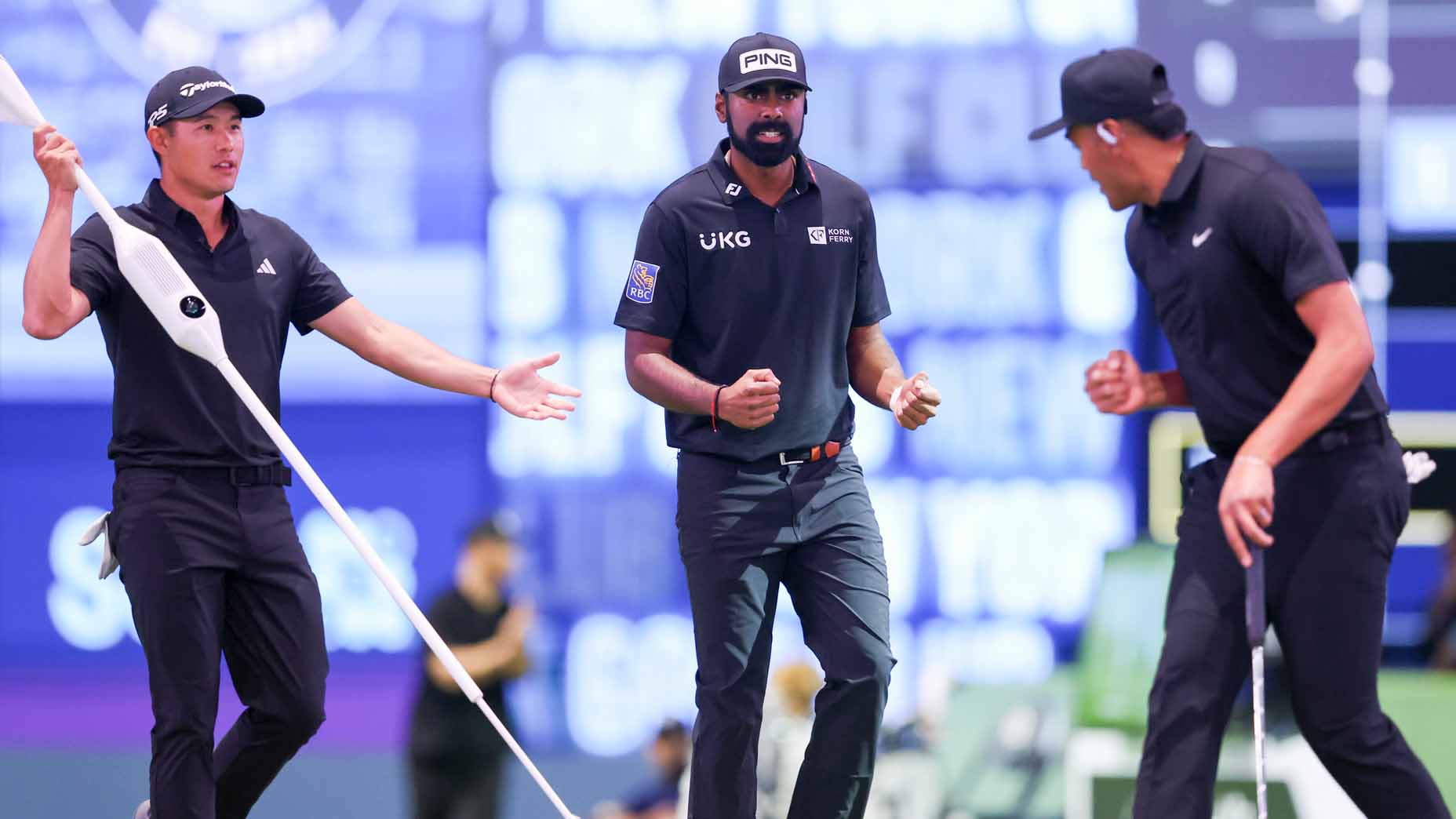
The key to TGL's momentum surge was on display Monday night.
Getty Images
TGL, the new simulator golf league that Tiger Woods and Rory McIlroy co-founded, always had potential.
A fast-paced, high-tech team golf league with most of golf’s top stars seemed like the exact change of pace golf needed opposite the Thursday-Sunday grind of the PGA Tour. The key would be to find an audience, hold onto it and then grow as the league got its feet under it and made the necessary adjustments.
The first few TGL matches were clunky. There were too many blowouts, the technology was an issue and the league seemed to lack a clear identity of how competitive it wanted to be.
But thanks to the nimbleness and adaptability required to quickly adjust the rules and gameplay, TGL has picked up momentum in recent weeks. The matches are more competitive, players have completely bought in and the product is becoming what Woods and McIlroy envisioned.
However, the biggest key to TGL’s momentum surge is obvious, even if the effect has been gradual.
“I feel like the golf keeps getting better and better,” Cam Young said on Monday after New York Golf Club’s loss to LAGC. “We couldn’t have played much better tonight. We played really well, obviously, last week. So I feel like that’s all kind of a product of us getting used to it and playing together a lot.”
The technology has made the pros look silly at times. The simulator has seemingly had moments where it didn’t read the flight of the shot properly, leading to pros looking confused when a shot they thought was hit well drifts off course.
While the tech remains imperfect, the players are starting to figure it out, as evidenced by the lessons Tony Finau got from teammates Collin Morikawa and Sahith Theegala during his lone practice day at the SoFi Center.
“When it came to hitting into the screen, I noticed for my fade, it’s easy to hit it up the left side of the screen, and I felt like it wasn’t coming back, so I started to aim a little bit more to the right, and I kind of watched Collin and Sahith hitting, and it wasn’t anything they told me, but just watching them,” Finau, who signed a one-match contract with LAGC said.
The sand traps have been difficult for the pros to master. McIlroy has talked about how the climate in the SoFi Center makes it so the sand gets drier, and it’s harder to get the club through at times.
There’s a trick to solve that, though, and it also works for chipping off the turf around the high-tech green.
“Out of the sand and around the greens, they were both like, never decelerate,” Finau said. “Make sure you accelerate through the shot. For every chip shot, you’ve probably got to hit a little bit harder than you’re thinking.
“When you’re hitting off turf, you think it’s going to bounce, but it comes off pretty clean. It’s not really going to bounce so you can go ahead and give it some speed, so that helped a lot when I had chip shots or putts.”
As for putting on the slick, high-tech green, TGL tweaked the slope to make it easier for the pros to putt on and not roll 8-to-10-foot putts 5 feet past the hole.
But the pros have also gotten accustomed to how to read a green that presents a different question than the greens they normally read.
“I think the greens are so different,” Matt Fitzpatrick said. “I compare it to like a new build of a new golf course. The green almost hasn’t settled. There’s so many subtle breaks. You can see it one way, it might just go a little bit the other way, and you’ve under-read that, and it stays high, whatever it may be.
“I just think there’s a ton of subtleties, but one thing I know is certainly tonight and last week, as well, when we were talking about the shots themselves or the putts themselves, it was definitely like, oh, it’s not outside the hole. There’s less break.”
“I think when you putt on real grass, it stays on the ground a lot more, and when you putt on turf, not that it skids, this rolls amazing, but if you miss it a little bit, it can kind of — with all the subtle breaks, you see some putts that kind of drift off,” Morikawa added. “It’s just being able to adjust. It’s something else, but you can figure it out.”
TGL always needed the PGA Tour’s best players to buy into the concept and for the golf to be high-level, or else there would be little reason for fans to continue to tune in.
The buy-in has never been an issue. Every player is invested in the product and enjoys competing in a different atmosphere than they are used to on the PGA Tour.
Now seven weeks into the schedule, players are deciphering how to attack TGL’s technology. That has led to a flurry of chip-ins, scores of long putts being holed and matches coming down to the wire — with some help from the needed tweak to “The Hammer” rules.
The secret sauce to success was always the right mix of high-level golf, competition and entertainment. There are still changes to make in the offseason. But TGL has all the ingredients and is starting to show what it will look like when everything comes together.
Latest In News
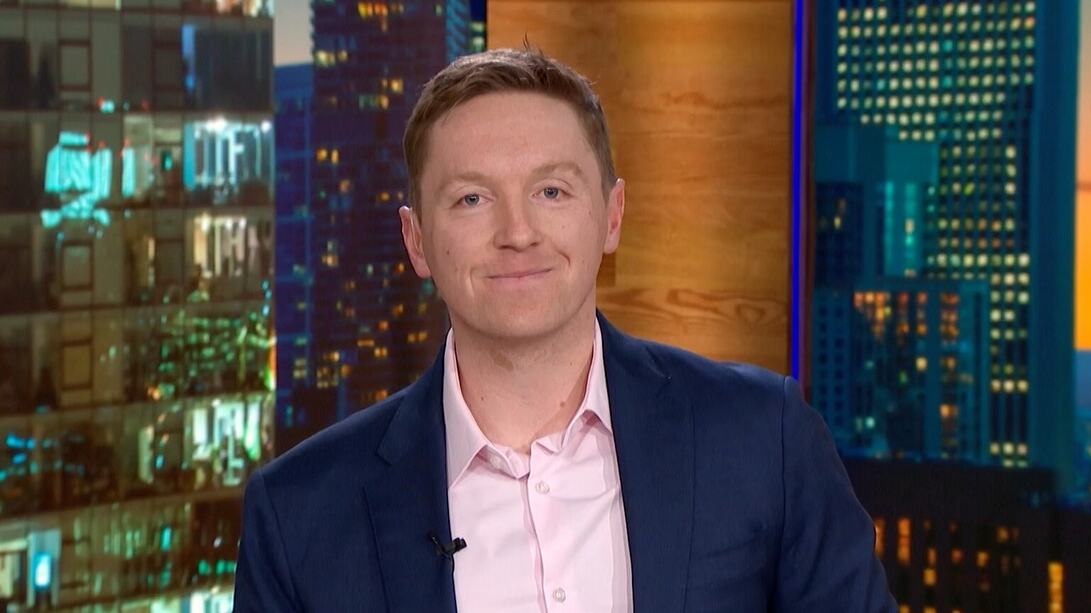
Josh Schrock
Golf.com Editor
Josh Schrock is a writer and reporter for Golf. com. Before joining GOLF, Josh was the Chicago Bears insider for NBC Sports Chicago. He previously covered the 49ers and Warriors for NBC Sports Bay Area. A native Oregonian and UO alum, Josh spends his free time hiking with his wife and dog, thinking of how the Ducks will break his heart again, and trying to become semi-proficient at chipping. A true romantic for golf, Josh will never stop trying to break 90 and never lose faith that Rory McIlroy’s major drought will end. Josh can be reached at josh.schrock@golf.com.

